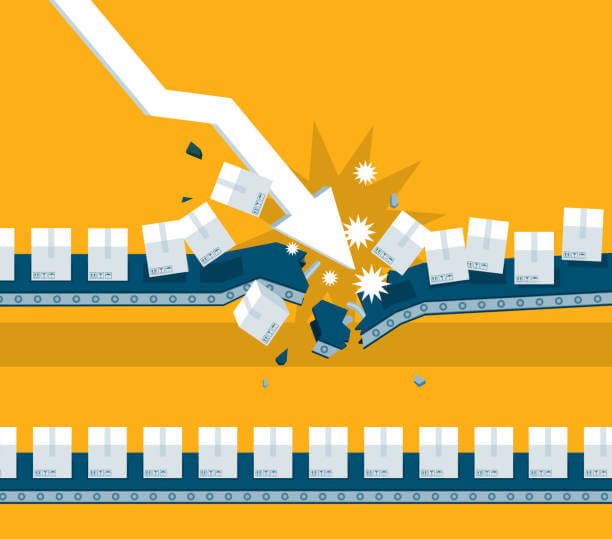For as long as I can remember, I’ve been trying to figure out how to make processes work faster. Along the way, I’ve helped countless businesses streamline operations with my ability to find the best way to do this to help them scale.
In this article, I’m going to talk about the key to scaling your service based business. It all starts with finding the bottleneck.
Background
If your service based business is in growth mode then your next order of business is ensuring that you’re going to be able to support that level of growth.
When your company is in growth mode, most of your focus is on bringing in new business. I find that most service based businesses are not planning appropriately for how they are going to meet that demand when the growth actually takes place.
For example, if you swap a high performance engine into a car but don’t upgrade the power delivery system, suspension and brakes then all that extra power is going to just break everything and your car won’t run. Let’s make sure this doesn’t happen to your service company as you try to scale.
Charting Your Growth Trajectory
I talk a lot about making sure you don’t prematurely try to scale your company. You’ll find a lot of this talk in popular books like Lean Startup as well. However, there is a time and place to prepare for scale and this is not talked about enough. I feel this is a gap in the market. Many people don’t write about it and the resources that are out there don’t appear to be able to provide the right guidance here. I’m hoping to help fix that problem by writing about it quite a bit myself.
When your team is designing the growth trajectory that you’d like to experience, you should ideally also be considering what that will mean for your operations department. Map out where you are and where you’re hoping to go. Measure how much you expect to grow and compare that to the capacity you currently have from an operations and supply chain perspective. This way you’ll know what it will take to reach the breaking point with your current capacity.
While you’re at it, develop a timeline of sorts about where you expect to be and by when. This way if your plan develops the way you’d like it to you’ll be able to keep an eye on when you need to be prepared to make investments to support the growth. You don’t want to wait until your operations department is overwhelmed. If you wait too long, it’ll be too late to maintain maximum efficiency and could have damning consequences for your business. You don’t want to be in a situation where you can sell new business, but can’t deliver. That can damage your reputation and turn customers away.
Create Your Value Map
When it’s time to evaluate the current state of your supply chain and operations department you’ll want to map out the current system so you know how and when a new customer receives value from your business. You should always know what these numbers are and be constantly measuring them to keep them within a healthy threshold that your leadership team has designated as an appropriate range.
Continuing with the car analogy, when you press the accelerator numerous things happen to actually make the car go faster. First, the computer tells the car to supply the engine with more fuel that the engine can convert into more power. This power is delivered to the drive train which in turn spins the wheels at a higher rate making you go faster. Think of each of these interconnected steps as a harmonious system that needs to stay in sync in order to achieve the optimal outcome.
If the systems at your company are not operating harmoniously and designed to support the capacity needed, they will break. If just one of the links in the chain I described for the car aren’t up to the task the whole operation will fail because they all depend on one another to work.
So map out the current process for your company to deliver value for your customer.
Identifying the Bottlenecks
If you ramped capacity by 50% today, where would your process break first?

Get our awesome product content delivered daily-ish to your inbox
If you aren’t sure, then you don’t know where the current bottlenecks are in your supply chain. This also means that when you do ramp capacity, you’re going to experience some very unwanted surprises as you panic that your process might break down or the whole system might collapse because you deliberately invested in increasing demand.
If you plan to scale without knowing where your bottlenecks are and planning to address each then you’re going to make a mess. If you invest in growth and it pays off you still need to deliver that value to customers. If you don’t you’ll actually be making the situation for your business worse, not better.
Continuing the mapping exercise from the previous section, you want to use the map you’ve developed to identify the weak points or bottlenecks in the process. This is easier to identify if you add information related to capacity not just for the entire process, but each step in the process. For example, how long does each step in the process take? There’s typically correlation between the steps that take the longest and the ones that are most likely to break if you need to ramp up capacity for the whole process quickly so you should look there first.
So next, add to your map any data related to capacity and time related to completing each step in the process to identify the weak links. Once you’ve found them, you need a plan for what you’re going to do to address each so that they don’t break when you ramp capacity.
Eliminating Bottlenecks
Once you know where to focus, you can get started with eliminating the bottlenecks. We need to better understand why each of these steps are current bottlenecks. If they are the slowest and lowest capacity elements of your supply chain then we need to figure out how to boost their capacity to increase the overall throughput and robustness of the process.
A common mistake I see growing companies make is having a step in the process simply be just a person with a certain amount of knowledge. This strategy may have been effective at an early stage, but as you grow and scale this is a major red flag for problems moving forward. Search for any steps that aren’t a process and are actually just a person. The mapping exercise should make this more obvious. Understand that this won’t scale and will need to be redesigned as a process instead.
Begin the process of identifying each bottleneck then planning to redesign that step as an appropriate process with enough capacity to support your growth.
Pro Tip
Individuals as steps is always a bad idea. It seems quick and easy when your supply chain is young, but as you grow what seemed to work well is now the weakest part of the chain. For many reasons you don’t want this situation to persist. If the person leaves they typically take the knowledge with them. If they want to take vacation, can they and even if they can, does anyone else take over or does it just stop until they get back? I’m sure you see the problem and it’s probably something that’s been in the back of your mind to fix. This is a friendly reminder and a warning to fix it now before it causes major problems for your company and stalls or reverses your growth.
You’re Not Done Yet
It’s a good idea to go through this process as part of designing your plans to scale your business. However, this isn’t a one and done deal. This is a process you need to invest in continuously. Why? That’s because the bottlenecks never really go away, they just move around. For example, if you eliminate the first bottleneck then another step in the process will become the current bottleneck and you’ll have to redesign that step if it is also not up to the level of capacity you need to support your organization’s growth trajectory.
Plan to continuously invest in searching for and eliminating bottlenecks. The more proactive you are here the more likely you are to actually successfully achieve your growth trajectory. Keep in mind that there is a ramp period for making these changes. You may not be able to identify and eliminate them overnight so you’ll want as much lead time as you can because making changes rapidly can cause other problems. This is another reason why it’s best to be as proactive as possible.
Getting Started
If your firm is in growth mode then you need to be prepared for what’s coming. Start by mapping out your current processes in the critical path of the coming growth. Then you can start to evaluate where you think the process will break first and address it before that happens.
Hiring Help
I can help your professional services firm support aggressive growth without adding headcount. Email me at sean@nxtstep.io to ask me how I can do this for your organization.








